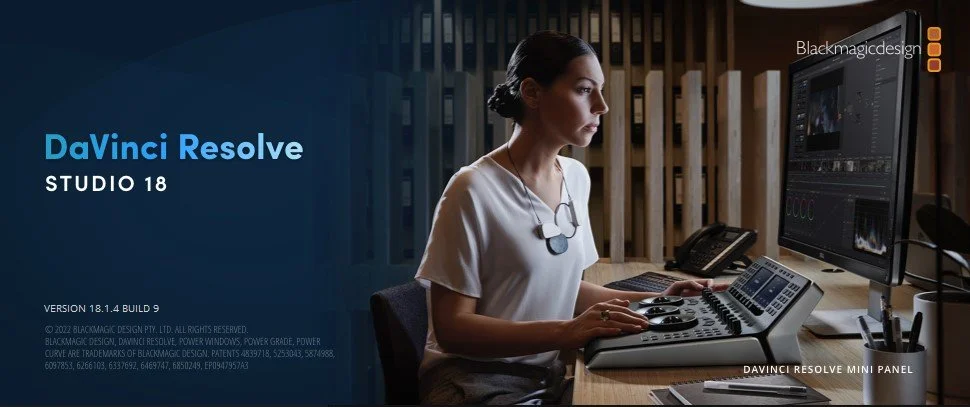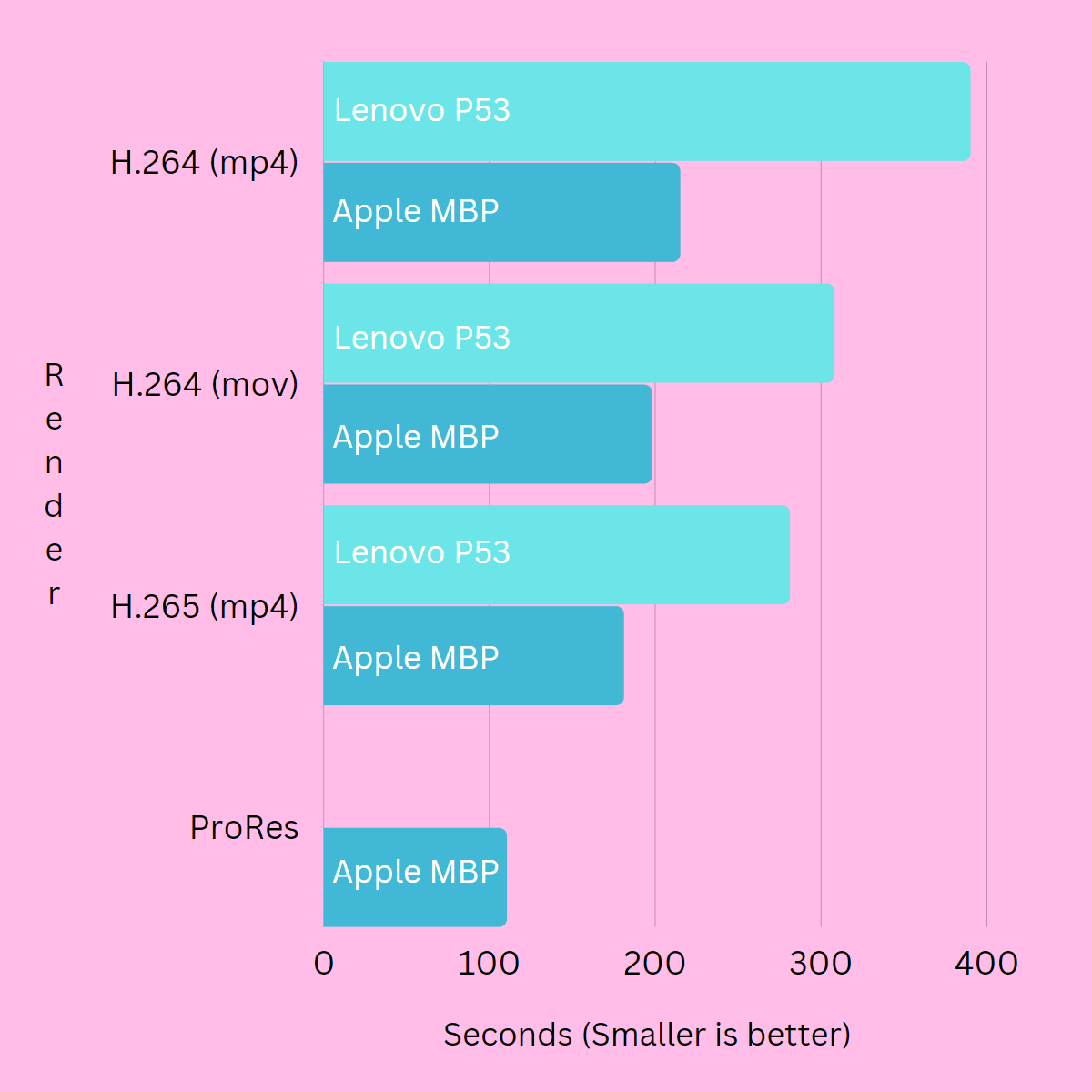Creator [Laptop] Clash
Head’s up: The only thing motorcycle-related in this review is that I use computers to create content related to motorcycles. Skip this one if you don’t care about computers. You can also skip if you have no interest in a comparison of two units that are two and three years old, respectively. I don’t know if I consider myself a creator or not. The two laptops discussed here are tools for creators, regardless of whether they are used to create.
How did we get here?
I have a laptop. Actually, I have several but only two are in working order. One is issued from my day job (Dell Latitude 5400) and a pile of garbage you can still buy renewed right now for under $300. To be fair, with all the cybersecurity add-ons required for business, the Dell doesn’t stand a chance. It might be fine if there wasn’t so much running in the background.
My current personal laptop is a Lenovo P53 I purchased from Lenovo in 2020 to replace a 4-year-old 12.5” Razer Blade Steath. My intention was for it to be a desktop replacement, as well. It has met that need with the addition of a dock. The Lenovo P53 has a 15.6” screen, a 9th gen Intel i7-9850H CPU, a discrete GPU (NVIDIA Quadro RTX 3000) and a weight of over 5 pounds. It had 32GB of RAM (not including the 6 GB dedicated to GPU) and a 512GB NVMe SSD when purchased.
One positive attribute of Lenovo mobile workstations is their upgradeability. Upgraded, it has 96 GB of RAM (added 64 GB of Micron/Crucial DDR4) and 3.5 TB of storage (added 1 TB and 2 TB Samsung 970 EVO NVMe SSDs). Not counting the docking station and extended warranty, I am into this machine for more money than I care to mention. We’re talking CSC TT250 after taxes and registration dollars.
Connected to the docking station and working with my dual monitor setup and peripherals, the P53 is fine. No complaints. As a mobile workstation, however, it isn’t very mobile. Disconnected from the dock and sitting on my couch with it on my lap, the loud cooling fans are distracting and it gets very hot. Battery power only lasts for 40 minutes before the 90Wh battery (93% healthy after 3 years of use) drains completely and the massive 230w charger is required. It has a ten-key, a selling point when I first bought it but has become a nuisance and awkward when typing away off-center for hours.
If I have one skill, it is convincing myself that I need to buy something. Having to leave the comfort of my couch to walk upstairs and retrieve my laptop was enough of a reason.
Let the shopping begin.
My first consideration was a tablet with a keyboard since I wanted something small and portable. The price of a good tablet/keyboard combo isn’t much different from a laptop and laptops make better laptops than cosplaying tablets. That’s tablets out. My attention turned to actual laptops.
The internet has many opinions and computers are no different. I was concentrating on 13” for the portability factor. Some usual suspects were in the mix like the Dell XPS 13 and Lenovo Yoga. The professional/tech-focused internet said that the last generation MacBook Air (MBA) was the one ‘most people’ should get. There are issues with that. Apple still sells that version new. The base model has 8 GB of RAM and a 256 GB SSD. How is it possible to buy a computer in 2023 with those specs? I bought a laptop in 2012 with those numbers…and a touchscreen. Coming from the Windows world, I cannot even imagine buying a new machine now with 8 GB of RAM. My Lenovo idles at 14 GB of usage because ‘idle’ to me usually means 40 open tabs in two browsers including two different YouTube accounts and various others.
There’s another problem. Apple pricing. They are notorious for expensive upgrade options. If you spec out a new M1 MBA with 16 GB RAM and a 512 GB SSD, $999 suddenly becomes $1399. The new M2-equipped model is $1599.
There is a 13” M1 MacBook Pro (MBP). However, the 13” MBP and MBA don’t appear to be much different except the Pro has cooling fans (MBA is fanless) and a barely higher-spec CPU. There is not much of a reason to get one over the other, from what I can see. If you’re rendering ProRes video, I might see the need for the Pro but, otherwise, the MBA is the one to get. I’m not entirely sure why the 13” MBP exists. The ProRes will come up again later.
Computer technology has always been a moving target. New generations of hardware are providing diminishing returns with each release and have for years now. I’m not surprised that the internet says the last generation MBA is the right choice for most. The miserly specifications on the base configuration and limited ports for connectivity (Thunderbolt/USB4 only) aren’t ideal, though. That brings us to the 14” MacBook Pro.
The base configuration M1 MBP 14” released in 2021 has 16gb of RAM, a 512gb SSD, more connectivity (card reader, HDMI) and a higher-spec chip. It had a price tag of $1999. The new M2 MBP 14” is even better-spec’d but was just released and the price is the same. However, Apple’s refurbished store had the base M1 MBP 14” for $1539. For less than $200 more than a new M1 MBA similarly configured or $60 less than the M2, I thought it was worth it. It is weird, coming from the Windows world, to buy a laptop that has specs from 2021 for over $1500 but I took a chance. I was not concerned with the refurbished aspect, especially coming directly from Apple.
Note: You can find refurbished MacBooks from other sellers for less money than Apple prices them. Apple treats their refurbished as new and it was worth the extra cost for me to buy directly from them.
I justified the MBP in my mind and placed my order, $1539 plus tax and three years of AppleCare+. Good thing my credit card is made of metal or it might have melted. It showed up at my door less than 48 hours later. Pretty dang fast for free shipping of a product not carried in stores.
Color me impressed
My biggest concern with buying an Apple product is the OS. I have a company-issued iPhone XR from my day job and I barely use it. I’m an Android guy. Every computer I have ever purchased with my money or ever used for work was a Windows machine. I’ve used nearly every Windows version from 3.1 to 11. I had not used an Apple computer since I played Super Bunny. That was on an Apple IIe *checking my watch* 30 years ago. The thought of dealing with MacOS had me panic-watching YouTube tutorials and reading articles demonstrating MacOS navigation to Windows users. My concern was misplaced.
The first thing I did (after updating to Ventura from Monterey) was download Geekbench 6 and run benchmarks. Surely, this Mac can’t compete with my powerhouse Lenovo. Boy, was I wrong.
CPU Scores:
GPU Scores:
Geekbench isn’t the last word in benchmark comparisons. I could run many different tests. I’m not Gamers Nexus. This isn’t a technology-focused site. It will provide an OS-independent idea of machine performance, though. The numbers tell us that the M1 Pro CPU is nearly twice as fast as the slightly older Intel and the discrete graphics running in Windows is nearly matched by what is inside the Mac.
Ok, so the MBP is higher performance than I expected. Nothing to complain about there.
I downloaded Microsoft Word and began work on my blog while getting used to MacOS, the lack of a backspace key and the fancy track pad with gestures. The next two things I noticed coming from the P53 were the lack of heat or fan noise and comparatively unlimited battery life.
Within 24 hours of working on the MBP, the world I knew was gone. Have Macs always been this way? My Windows-bias had always considered Apple as a lifestyle brand, something that people have because they are fashionable and not because they are good. Now I need to buy a GS and take my MacBook to my local Starbucks to be seen using it.
A bonus that I did not consider was that the MBP can work with my Thunderbolt3 Lenovo dock. My Logitech MX Master 3 mouse works with it, too. Cross-platform compatibility is welcome. Fewer things to buy.
My memory concerns were justified. With nothing open but the activity monitor, the MBP idles at 6.5 GB of usage. I blame at least 500 MB on being connected to my OneDrive account. 9 GB is used with Word open and three Brave browser tabs running in the background. 8 would not have been enough.
Aside from using MSWord, maintaining my website, online shopping and general internet tomfoolery, Davinci Resolve is thing only other task I use my computers for. I hobbled together a real-world test.
The test: Render a five-ish minute timeline with a mix of 2.7k and 4k video in H.264 and H.265 with applied FX at 4K30. Clips used were identical files saved on internal drives and both machines were connected to wall power at the time of the test. Resolve was the only active program running.
A DaVinci Resolve Studio license allows for two machines to run the premium version concurrently. On the Windows machine with a discrete graphics card, the paid version is required to use the GPU for rendering. I only tested one rendering on the MBP with both the free and paid versions but the rendering time was the same. My choice in rendering format could be the cause or maybe Resolve sees the Mac M1 as a standard integrated graphics setup but one test was enough.
This isn’t a Resolve review. If I were running an M1 or M2 Mac and didn’t plan to use the fancy extras, I would not waste $300 on the paid version. You don’t need it to make engaging content. It certainly hasn’t made my content more engaging. That is what is called ‘a me problem.’
Blackmagic Design DaVinci Resolve
Results were surprising. Working in Resolve and scrubbing through the timeline was smooth and responsive on the Mac. I had expected issues with 16 GB of RAM as I had experienced playback during scrubbing on the Lenovo with 32. That’s why I upgraded to 96. I’ve hit as high as 79 GB of memory utilization on that machine using Resolve alone.
There wasn’t a single render where the Lenovo P53 matched the speed of the MBP. Some renders were worse than others. That probably has something to do with render formats using the GPU differently. In every case, the Intel CPU was pegged at 100% utilization and thermals required significant throttling. The Intel CPU reaches Tj Max regularly and is guaranteed when in Resolve. Performance of this small test aligns with results I have experienced rendering files on the P53. It usually takes longer than the length of the video to render when I export mp4 video files.
The MBP stayed cool and silent for every render except for one, ProRes 422. I didn’t even realize the fans had started up until I heard an unfamiliar sound and tracked it to the fans. It is possible that the fans had engaged sooner but the Lenovo is always so loud, I couldn’t hear them if they did. Resolve in Windows doesn’t render in ProRes preventing comparison. ProRes 422 rendering on the MBP was completed in less than half of the time than any other render. The file was enormous (37GB) for a 5-minute video but worth mentioning for the blazing rendering speed.
Is comparing a laptop with a CPU 4-generations old (13th gen is out now) to the MacBook fair? The M1 Pro isn’t that much newer. It may be possible that the performance of the Intel chip has from being run three years at, or near, Tj Max. I don’t know enough about silicon performance to say. The chip hasn’t failed yet. Someone can tell me if it affected performance long-term before failure. Windows11 Pro may have also reduced performance over Windows10 Pro, installed originally.
Conclusion
I’m not disappointed with my 3-year-old P53. You can’t beat 3.5TB of internal storage and all the RAM you’ll ever need. It does what I need it to do. Longer render times don’t affect me much because I am not a prolific video editor. If I were publishing multiple videos a week or had editors on payroll, the story would be different.
The MacBook Pro, though.
It is rare that I buy an item and it exceeds expectations. Most acquisitions have a level of disappointment. Not today. I am very impressed with the performance of my new laptop. I should have listened to the internet and purchased an M1 MacBook Air. Apple has refurbished units with 16 GB of RAM and 256 GB of storage for $520 less than I paid for the MBP I have now. Wasn’t the first time I’ve overbought. Won’t be the last.
If the honeymoon phase doesn’t end in a sour divorce with my new laptop, future laptop purchases will probably be from Apple. Modern Windows machine architecture does not make for a compelling laptop product in comparison, for my use case. I don’t game. I don’t need touchscreens. Intel chips run hot and laptops do not deal with that heat effectively. Discrete graphics suffer from the same problems in mobile applications. Windows laptops with any reasonable battery life use integrated graphics for a reason. Mac laptops technically do, too, but it isn’t a direct comparison (apples to Apple?).
There are other factors to consider besides strict performance capabilities. I had no issues with writing this article bouncing between both machines with the file saved to my personal OneDrive. Microsoft applications have more features in Windows than MacOS. No surprise. ProWritingAid integrates better with Windows, as much as that matters, and I couldn’t find anything quite equivalent to CPUID’s HWMonitor for MacOS.
I could never work on my MBP, as configured, how I do on the P53. My habit of keeping an unreasonable number of tabs and programs always open requires more memory than the MacBook has. I didn’t buy it for that purpose. If/when my Lenovo dies from being run too hot for too long, the MBP can effortlessly take its place at my desk. Or maybe I’ll buy a Mac Studio.
Is it the best laptop I’ve ever owned? All signs point to yes. My Razer Blade Stealth was smaller and lighter but also suffered from integrated graphics and limited ports. My Lenovo P53 has more storage and memory but only usable connected to power and at its best connected to a docking station. The MacBook Pro isn’t a desktop cosplaying as a laptop like the Lenovo and it isn’t overly compromised for the sake of portability like the Razer. It is powerful enough to stand in as a desktop. It is portable enough to take it anywhere, pleasant to use when you do and a battery that won’t make you stress over the location of your charger.











